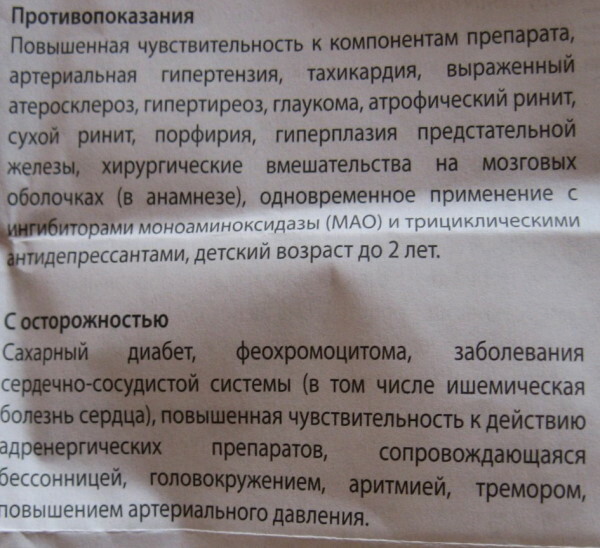Content
- What it is
- Causes of occurrence
- Evolutionary theory
- Hereditary theory
- Psychological theory
- Medical concept of disease development
- Types of disease
- Stages of the disease
- Symptoms
- Diagnosis and treatment of the disease
- Forecast
- Prophylaxis
- Complications
- Paranoia videos
Paranoia - it is a chronic type of mental disorderassociated with the emergence in a person of excessive suspicion, rancor and distrust of the people around him, as well as a tendency to perceive their actions as a threat.
Such a pathology that occurs both in childhood and at an older age, in simple terms, is associated with the patient's desire to prove his the significance and value of emerging ideas, which occurs against the background of a complete absence of self-criticism and an increased critical attitude towards people who do not share opinions sick.
What it is
Pathology is associated with the appearance of the patient requiring immediate implementation "over ideas" and constant dissatisfaction with those around him people who interpret them as friendly and neutral as well as critical remarks and actions as disrespectful or open threats.
A paranoid person is a person who is confident in the exceptional value of his talent or ideas, as well as in the prejudice of others around him. The ability to reason reasonably in such patients is preserved, but it is aimed primarily at proving one's worth and gaining recognition from other people.
Attempts by others to show the patient the unreality of his thoughts awakens a feeling in the paranoid resentment and hostile aggressiveness, manifested both in contact with strangers and with loved ones people.
The person suffering from paranoid disorder is characterized by:
- the logical validity and consistency of the ideas put forward, which are practically impossible to refute;
- high energy potential, used to achieve the desired goal, and internal dissatisfaction, expressed through constant conflicts with the "unfriendly" world;
- mono-directionality of the main idea affecting a specific area of human activity;
- lack of hallucinations and the ability to maintain clarity of thoughts;
- predictable type of behavior and sequence of actions based on the patient's false idea of his uniqueness.
A typical example of a patient suffering from paranoia is a person who once starred in a movie or achieved the publication of his story or poem. From that moment on, a person, convinced of his own uniqueness, seeks to prove it to others, and when he is refused to continue his career, he accuses other people of unprofessionalism and bias.
Any criticism or attempt to point out the lack of outstanding ability is perceived by him as a personal insult. Unable to switch to other actions, such people can harass directors or visit publishers for years, showing extreme resentment and distrust of the whole world.
A paranoid patient tends to blame nearby enemies for his failures, gradually forming a conspiracy theory in his mind. Such people are suspicious of anyone who meets them, trying to find signs of disrespect or threat of harm in friendly or neutral communication.
Paranoid:
- suspicious and distrustful of those around them, both strangers and close people;
- during social contacts, they experience strong stress associated with the belief that they are simply being used and humiliated;
- constantly expect resentment or a dirty trick from others;
- try to find hidden, negative thoughts in the words or actions of strangers;
- differ in touchiness and aggressiveness, as well as pathological jealousy;
- require from close people constant confirmation of the "harmlessness" of their words and actions;
- try not to tell strangers about their life.
Causes of occurrence
Paranoia is, in simple words, a severe form of psychosis that combines illogical and delusional ideas, inherent in mental abnormalities while maintaining a normal way of thinking, emotional background and mental abilities.
Such a pathology can occur both in childhood and at the age of 25-30, and the exact reasons for its development have not yet been established by specialists. There are several theories for the development of paranoid personality disorder:
Evolutionary theory
Proponents of this concept call the disease the result of a long-term sustainable behavior associated with the ability to survive inherent in all representatives of the animal the world. Supporters of this theory have defined this principle for a person as “the strongest survives”, where it is necessary to clearly distinguish between the concepts of “black” and “white”, “friends and foes”. This concept determines the tendency inherent in the paranoid to be angry and distrustful of others, causing him to fear for his life.
Hereditary theory
In an attempt to explain the development of paranoid personality disorder, scientists have repeatedly conducted studies of twins, having established as a result that paranoia is equally inherent in each of them.  Scientists have not yet established the mechanism for the development of paranoid traits, but experts suggest that the disease is more characteristic of people whose relatives previously suffered from schizophrenia.
Scientists have not yet established the mechanism for the development of paranoid traits, but experts suggest that the disease is more characteristic of people whose relatives previously suffered from schizophrenia.
Psychological theory
Psychiatric specialists associate the development of paranoia:
- with humiliation and physical punishment, which the patient faced in childhood;
- with family life with overly demanding parents;
- with maternal or paternal overprotection.
According to this theory, the main cause of the development of paranoid disorder is undermined in early childhood the patient's trust in his parents, gradually transforming into distrust and suspicion of everyone around people.
Medical concept of disease development
From a medical point of view, it is believed that the appearance of paranoia is associated with a violation of protein metabolism in the head. the brain, provoked by both pathological changes and unfavorable (stressful) life situations.
So paranoid personality disorder can occur because of:
- the development of a depressive state;
- low self-esteem;
- strong feelings;
- feelings of loneliness and forced isolation from society;
- taking medications;
- abuse of alcohol, narcotic or psychotropic substances;
- Alzheimer's or Parkinson's disease;
- as a result of a previous stroke, epilepsy or encephalopathy.
Delusional ideas that arise in a patient are closely related to his character and personality type. His value system does not coincide with the real world, which causes a conflict with others, causing the paranoid to believe that enemies live around him, constantly weaving intrigues.
The main desire of the patient is to achieve a significant place in society, but persistence and aggressive actions are not only not helps the paranoid, but also pushes him away from the surrounding society, leading to complete isolation from society and immersion in his inner peace.
Types of disease
Paranoia is, in simple words, a pathological condition in which a person ceases to adequately perceive the surrounding reality, replaced in his mind by a "super-idea", wearing, in most cases, delusional character.
Experts try to classify paranoid personality disorder according to the prevailing main idea dividing pathology into:
| Classification | Description |
| Involutionary paranoia | Pathology develops in adulthood (from 45 to 65 years) and is associated with the appearance of:
The onset of this type of disease is acute, and the course is rapid and requires urgent hospitalization of the patient. |
| The paranoia of greatness | The second name of the pathology is "megalomaniac" and it is associated with the appearance in the patient of the idea of transforming society or a specific sphere of human activity, due to his own "brilliant" discoveries. |
| Paranoia of jealousy | This type of disease is based on an acute fear of marital (partner) infidelity, in which "imaginary" adultery does not require proof, but is perceived by the patient as a fait accompli. Such a pathology can begin with accusations of a partner of flirting or free behavior, and then gradually develops into a firm belief in treason, unshakable by any exculpatory arguments. |
| Religious paranoia | Develops against the background of religious beliefs. |
| Erotic paranoia | The reason for the development of pathology is associated with sexual fantasies, which are in the nature of delirium and occur in most cases in women aged 45-55 years. |
| Persecutory paranoia | Characterized by the systematic manifestation of persecution delusions. |
| Senile paranoia | The disease occurs in old age and is associated with the development of pathological conditions that disrupt the functioning of the brain. |
| Alcoholic paranoia | A chronic type of psychosis associated with the development of alcoholic encephalopathy and manifested by delusions of jealousy or persecution. According to statistics, men who are prone to alcohol abuse are most often affected by this disease. |
Stages of the disease
Paranoia is, in simple terms, a chronic type of psychiatric disorder with 3 distinct stages:
| Stage | Description |
| 1 (preparatory) stage | It begins with the appearance of delusional thoughts in the patient, which have been nurtured for a long time, but have not yet manifested themselves in the words and actions of a person. Continuing to lead his normal life, the paranoid gradually becomes more suspicious of the people around him, starting to notice "fictional" aggression. Trying to protect themselves from danger (in most cases, fictional), paranoids become hostile to law enforcement officials, social workers, colleagues and others persons. |
| 2 (main) stage | This stage can last for many years and is characterized by the active study of delusional thoughts that arose at the first stage of pathology. The paranoid develops his own picture of the world, in which imaginary enemies constantly hunt him and his "unique" abilities. Trying to carefully monitor their words and actions, patients develop a persecution mania, and noticing that they are considered crazy, they try to protect themselves from society. |
| Stage 3 - Treatment of the disease | It consists in the use of medications and psychotherapy sessions, but treatment can be difficult due to the patient's confidence in the absence of any pathologies. |
Symptoms
Paranoia is a serious condition, accompanied by a pathological persecution mania that arises in a paranoid due to distrust and expectation of a threat from the people around. In simple words, this is the development of delirium of greatness that arises in a person with the appearance of overvalued or delusional ideas, associated with confidence in their own exclusivity and the presence of unique, underestimated by the people around them, abilities.
The first symptoms of paranoid personality disorder appear in a child aged 7-10 years and are associated with the development of excessive suspicion and significant overestimation of their physical or mental abilities. Children suffering from such a pathology are dismissive of the people around them, have practically no friends, conflict with teachers, and are distinguished by rancor and resentment.
With age, the symptoms of the disease worsen, reaching their peak by the age of 30-35. At this age, the patient gradually develops overvalued ideas related to the circumstances of his life, and any criticism is perceived as a feeling of envy and provokes an aggressive reaction.
As paranoia develops, it manifests itself:
- rigidity of the psyche and the development of stable "black and white" thinking;
- a tendency to perceive unfriendly or neutral actions of the people around them as potentially hostile;
- confidence that others constantly want to use the patient for their own purposes, using his property, the results of physical or mental labor;
- pathological jealousy and confidence in the infidelity of his partner, despite the lack of evidence of treason.
- excessive arrogance and sensitivity to criticism of others.
In any actions of others, including those performed by accident. The paranoid tries to find malice in everything, for example, believing that colleagues knowingly entered into a conspiracy to hinder his promotion, and neighbors are busy renovating the house only to force him to leave his dwelling.
Such confidence becomes the cause of constant quarrels and conflicts, and intolerance, inadequacy and belligerence of the paranoid force him to file complaints against imaginary enemies in various instances, provoking endless legal proceedings proceedings.
The criticism of the paranoid is very difficult. They also do not know how to forgive any, even accidentally inflicted offense. Fictitious or real minor damage becomes a reason for such patients for a long, protracted conflict, forcing the abuser to repeatedly apologize. Disrespect for the paranoid is the basis for a sudden outburst of uncontrollable anger, an immediate counterattack, or careful planning of revenge plans.
People with paranoid disorder are prone to prejudice, attributing to others negative intentions that appear in their own fantasies. With a biased attitude towards the collection of information, they manage to build their own logical and consistent picture of what is happening, excluding from it undesirable moments for themselves.
Gradually transforming into persecutory delusions or delusions of grandeur, the ideas created by the paranoid make him believe in his own uniqueness and the presence of outstanding abilities (artistic, mental, acting), the realization of which is hindered by malicious intent and envy of others, who specifically do not read his works or refuse to film roles.
A paranoid patient believes that he is constantly being watched, wanting to cause harm, while the presence of delusions of grandeur prevents him from sharing his suspicions, forcing him to hide his delusional system even from the closest relatives.
The emotional background of such people is meager and monotonous, and the prevailing emotions are anger, irritation, indignation, disappointment and discontent. Empathy, responsiveness and a sense of humor in paranoid people are very weak or completely absent. Such people are characterized by a disdain for the weakness of others and admiration for strength and power.
In severe cases, paranoid people quit their jobs in order to control the action of the spouse, to implement their "super ideas" or to seek justice in court instances.
Diagnosis and treatment of the disease
Diagnosis of paranoia is carried out by a psychotherapist based on the results of a conversation with a patient, data collection about the patient's history and identifying characteristic personality traits that persist throughout his life. The reasons for the appearance of the "super-idea", the principles of its formation and the logical conclusions underlying it are also of particular importance for the establishment of the diagnosis.
Determining the diagnosis, the specialist also needs to separate paranoia from:
- paranoid personality disorder, which is characterized by the presence of distrust of others and "super ideas";
- isolated delusional disorder (if delusional is present);
- schizophrenia.
Treatment of the disease is carried out on an outpatient or inpatient basis and consists in prescribing:
- antipsychotics with anti-delusional effect;
- tranquilizers;
- antidepressants.
Since patients in rather rare cases are aware of their problem, psychotherapy here is an ineffective method that requires a long process of building a trusting contact between a specialist and the patient. Most often, the paranoid treats the doctor as his enemy, so the decision to conduct psychotherapy is decided in each case individually.
The following sessions are considered acceptable for the treatment of paranoid personality disorder:
- family therapy;
- cognitive behavioral therapy;
- hypnotherapy.

In addition to the patient himself, the psychiatrist also works with the patient's relatives, teaching them to avoid critical remarks to the side paranoid, fill the patient's life with positive moments and translate conflicts into a humorous side, thereby preventing them aggravation.
Forecast
Difficult to treat psychiatric disorder requires long-term therapy aimed at gradual overcoming of the patient's negative attitude, but in most cases having an unfavorable forecast. According to research, paranoia is a lifelong psychological condition characterized by both periods of exacerbation and prolonged stabilization of thinking.
At the age of 30-40 years, the symptoms of paranoid disorder can be stopped, having achieved a period of stable remission, but by As we age, “overvalued” personality ideas and confidence in their own uniqueness are exacerbated, provoking a relapse pathology. Secondary paranoia can also be caused by injuries or diseases of the brain, occur against the background of an underlying disease, or develop as a result of alcohol abuse.
The most favorable prognosis, according to doctors, is paranoia caused by a single and short-term use of medicinal narcotic or psychotropic substances, requiring the appointment of corrective, intoxication treatment and allowing you to completely stop the symptoms diseases.
Prophylaxis
Prevention of the disease in most cases is ineffective, since the main causes of the development of the disorder remain not fully understood.
However, experts refer to the risk group:
- old people;
- persons with alcohol, drug or psychotropic addiction;
- patients with chronic ailments that provoke a violation of protein metabolism in the brain;
- men between the ages of 20 and 30;
- people with signs of a depressive disorder or psychosis;
- persons with a genetic predisposition to schizophrenia.
Persons with such a history should be under the supervision of a psychiatrist and, if necessary, receive timely medication and psychiatric care.
Complications
Paranoia is, in simple words, a pathological condition in which a person is any, even harmless he perceives criticism in his address as an expression of a feeling of envy, provoking his desire to take revenge offender.
If untreated, the complications of paranoia are disastrous for both the patient and the people around him. In an effort to realize his "super ideas", a person loses his job and destroys his family, and in attempts to take revenge on the offenders, he shows aggression and violence, often affecting people close to him. Gradually moving away from society, the paranoid gets stuck in his own "ideal", but not understood by the other world, developing suicidal tendencies.
According to doctors, the desire to inflict injury on oneself is common among paranoid people and often ends in the death of the patient himself and physical or psychological injuries in his loved ones.
Paranoia is a severe mental disorder that manifests itself in a person's obsession with their own uniqueness. In simple words, convinced of the presence of rare abilities, the paranoid seeks to realize his ideal desires and ideas, and when faced with critical statements, he convinces himself of the negative mood of the people around him, reacting to any comments with attacks of anger and aggression.
The disease, gradually transforming into delusions of grandeur, requires long-term treatment, and in its absence it can cause the death of the patient and the infliction of severe psychological or physiological trauma to those close to him people.
Paranoia videos
Paranoia. Personality Disorder or Apprehension:



